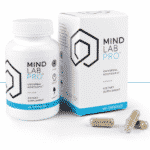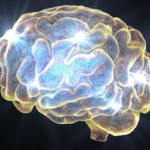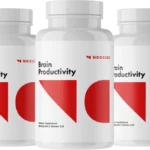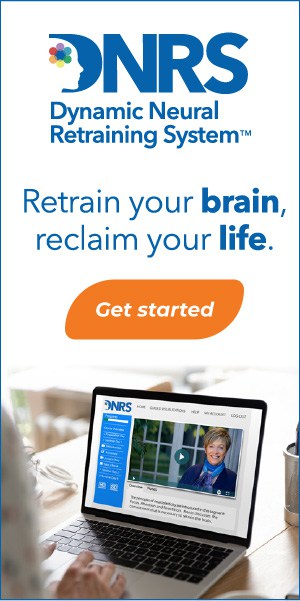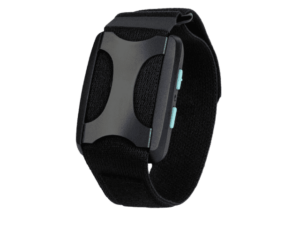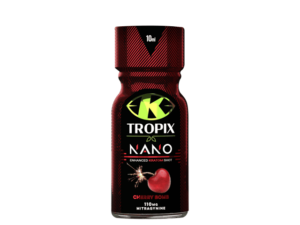In the ever-evolving world of cognitive enhancement, nootropics have taken center stage as powerful tools to optimize mental performance. Among the myriad of natural nootropics, Oat Straw has emerged as a promising contender, captivating the attention of researchers and enthusiasts alike.
In this comprehensive guide, we will explore the rich history, nutritional profile, and cognitive benefits of Oat Straw, providing you with the knowledge and insights to harness its potential for holistic brain health.
Biohack Your Brainpower
Introduction
Oat Straw, scientifically known as Avena sativa, is derived from the unripened Avena sativa plant, native to the lush landscapes of Northern Europe and North America. This humble herb has a long-standing history of use in traditional medicine, where it was revered for its calming and restorative properties.
Fast-forward to the present day, and Oat Straw has found a new purpose as a natural nootropic, garnering attention for its potential to enhance cognitive function and promote overall brain health.
Oat Straw Extract by Science.Bio

Natural support for mental clarity and calm.
Nutritional Profile of Oat Straw
Oat Straw boasts an impressive nutritional profile, setting it apart from its mature Oat grain counterparts. This green powerhouse is a treasure trove of essential minerals, vitamins, and unique compounds called avenanthramides. Let’s take a closer look at the key nutrients found in Oat Straw:
- Minerals: Oat Straw is particularly rich in iron, zinc, and manganese, which play crucial roles in various physiological processes, including cognitive function.
- Vitamins: This nootropic herb contains a spectrum of B vitamins, such as thiamine (B1), pantothenic acid (B5), and pyridoxine (B6), which are essential for maintaining optimal brain health and neurotransmitter balance.
- Avenanthramides: These unique bioactive compounds, found exclusively in oats, have been shown to possess potent antioxidant and anti-inflammatory properties, making them valuable allies in the quest for neuroprotection.
It is worth noting that the nutrient composition of Oat Straw can vary depending on factors such as farming practices, soil quality, and harvesting methods. Opting for organically grown Oat Straw supplements from reputable sources can ensure you reap the maximum benefits of this nootropic powerhouse.
Mechanisms of Action
Oat Straw’s cognitive-enhancing properties can be attributed to its multifaceted mechanisms of action. By delving into the science behind its nootropic effects, we can better understand how this natural wonder works its magic on the brain.
Firstly, the avenanthramides found in Oat Straw have been shown to enhance nitric oxide production, promoting improved blood flow and oxygenation to the brain. This increased cerebral circulation lays the foundation for optimal cognitive performance and neuroprotection.
Moreover, Oat Straw has been found to inhibit phosphodiesterase type 4 (PDE4) and monoamine oxidase B (MAO-B), two enzymes that regulate neurotransmitter levels. By modulating these enzymes, Oat Straw can positively influence dopamine levels, improving mood, motivation, and cognitive function.
Additionally, Oat Straw has demonstrated the ability to suppress inflammatory cytokines by inhibiting nuclear factor κB (NF-κB) activation. This anti-inflammatory action is particularly significant in brain health, as chronic inflammation has been linked to various neurodegenerative disorders.
Cognitive Benefits of Oat Straw

The cognitive benefits of Oat Straw are multifaceted, targeting various aspects of mental performance. Let’s explore some of the key areas where this nootropic herb shines:
Improved Focus and Attention
Several double-blind, placebo-controlled studies have provided evidence for Oat Straw’s ability to enhance focus and attention. Participants who consumed Oat Straw extract demonstrated significant improvements in cognitive performance, specifically in tasks measuring attention and concentration.
Reduced Anxiety and Stress
Oat Straw’s calming properties have been attributed to its ability to boost serotonin production, a neurotransmitter known for its mood-regulating effects. By promoting relaxation and reducing stress levels, Oat Straw can create an optimal mental state for cognitive performance and overall well-being.
Enhanced Memory and Learning
Animal studies have suggested that Oat Straw may enhance synaptic plasticity, the brain’s ability to form and strengthen neural connections. This neuroplasticity is crucial for memory formation and learning, highlighting Oat Straw’s potential to support these cognitive domains.
Neuroprotective Properties
Beyond its cognitive-enhancing effects, Oat Straw has shown promise as a neuroprotective agent. The antioxidant action of avenanthramides plays a vital role in combating oxidative stress, a major contributor to neurodegeneration. By scavenging free radicals and neutralizing their damaging effects, Oat Straw can help maintain the integrity of brain cells and promote long-term brain health.
Furthermore, the anti-inflammatory properties of Oat Straw have implications for neurodegenerative diseases. Chronic inflammation has been implicated in the pathogenesis of conditions such as Alzheimer’s and Parkinson’s disease. By suppressing inflammatory pathways, Oat Straw may offer a natural approach to mitigating the risk and progression of these debilitating disorders.
Synergistic Combinations
While Oat Straw is a potent nootropic in its own right, its effects can be further enhanced when combined with complementary nootropics. Some notable synergistic pairings include:
- L-Theanine: This amino acid, commonly found in green tea, can work in harmony with Oat Straw to promote a state of relaxed alertness, reducing anxiety while enhancing focus and concentration.
- Rhodiola Rosea: Known for its adaptogenic properties, Rhodiola Rosea can synergize with Oat Straw to improve mental resilience, reduce fatigue, and enhance cognitive performance under stress.
When incorporating Oat Straw into your nootropic stack, it is essential to start with lower doses and gradually increase based on your individual response and tolerance. As with any new supplement, it is always wise to consult with a healthcare professional to ensure safety and compatibility with your unique health profile.
Safety and Dosage
Oat Straw is generally considered safe when consumed in recommended doses. Clinical studies have employed dosages ranging from 800 mg to 1600 mg per day, with positive outcomes and minimal side effects. However, it is crucial to adhere to the dosage instructions provided by the supplement manufacturer or as advised by a healthcare practitioner.
Potential side effects of Oat Straw are rare but may include mild digestive discomfort or allergic reactions in sensitive individuals. If you have a known allergy to oats or experience any adverse effects, discontinue use and consult with a medical professional.
Preparation and Use of Oat Straw
Oat Straw is a versatile herb that can be used in various forms to support cognitive health and overall well-being. Whether you’re new to nootropics or looking to integrate more herbal supplements into your routine, here’s how you can prepare and use Oat Straw in its different forms:
Oat Straw Tea
Ingredients:
- 1-2 teaspoons of dried Oat Straw
- 8 ounces (about 250 ml) of boiling water
Instructions:
- Steep the Oat Straw: Place the dried Oat Straw in a tea infuser or directly in a mug. Pour boiling water over the Oat Straw.
- Let It Infuse: Allow the Oat Straw to steep for about 10-15 minutes. The longer you steep, the more potent the tea will be.
- Strain and Serve: Remove the tea infuser or strain the tea to remove loose Oat Straw. Enjoy your tea warm. For added flavor, consider adding a slice of lemon, a dash of cinnamon, or a teaspoon of honey.
Oat Straw Tincture
Usage:
Oat Straw tinctures are concentrated herbal extracts. Follow the dosage instructions on the product label, but a common starting point is 1-2 ml, taken 1-3 times daily. Tinctures can be taken directly under the tongue or added to a small amount of water or juice.
Oat Straw Powder
Incorporation into Diet:
- Smoothies: Blend 1 teaspoon of Oat Straw powder into your favorite smoothie.
- Yogurt or Oatmeal: Mix the powder into yogurt or oatmeal for a nutritional boost.
- Baked Goods: Incorporate Oat Straw powder into the dough of bread, muffins, or other baked goods to enrich your diet with its benefits.
Tips for Use:
- Start Slow: Begin with lower doses to see how your body responds, then adjust as needed.
- Consistency is Key: Herbal supplements like Oat Straw may require consistent use over time to notice significant benefits.
- Quality Matters: Opt for organic, non-GMO Oat Straw products to ensure the highest quality and efficacy.
- Storage: Keep your Oat Straw products in a cool, dry place to preserve their potency.
Integrating Oat Straw into your daily routine can be a simple yet effective way to support your cognitive health and overall well-being. Whether you prefer the soothing ritual of tea, the convenience of tinctures, or the versatility of powders, Oat Straw offers a natural, holistic approach to enhancing your nootropic regimen.
Oat Straw Discussions on Reddit
Reddit has become a hub for nootropic enthusiasts to share their experiences, insights, and questions about various cognitive enhancers, including Oat Straw. Let’s explore some notable discussions and user experiences related to this natural nootropic.
Oat Straw vs. Milky Oats
One recurring topic in Oat Straw discussions on Reddit is the distinction between Oat Straw and Milky Oats. While both are derived from the Avena sativa plant, they differ in their harvesting stage and processing methods. Milky Oats refer to the fresh, green oat tops harvested during the milky stage, while Oat Straw pertains to the dried stems and leaves.
If you’re buying dried milky oats, you’re better off eating a bowl of oatmeal every morning. It’s far cheaper and, as most are stating, unless you collect the fresh oat tops, it’s literally the same thing.
— u/jbrod1991 in discussion “Does oatstraw and milky oats have the same effect?”
This insight highlights the importance of understanding the differences between these two forms of oats and their respective benefits. While Milky Oats are prized for their fresh, concentrated essence, Oat Straw offers a more stable and accessible option for those seeking the nootropic benefits of this herb.
Unique Effects of Oat Straw
I have a different side-effect from oatstraw….for me it’s kind of a mild aphrodisiac! Not complaining, just sayin’
— u/squirrel_gnosis in discussion “Oatstraw feels like a tranquilizer”
These anecdotal reports serve as valuable insights, highlighting the individualized nature of nootropic experiences. While some users may experience more pronounced effects, others may require consistent use over time to observe noticeable improvements in their cognitive function and overall well-being.
Safety Considerations
When exploring nootropics, safety should always be a top priority. Reddit discussions on Oat Straw often consider potential interactions and precautions to remember. One notable concern is the potential interaction between horsetail, an herb sometimes combined with Oat Straw, and thiamin (vitamin B1) levels.
I wouldn’t be taking horsetail everyday, it can flush out potassium, and shouldn’t be taken with heart/Kidney issues. It also potentially breaks down thiaminase which can lead to thiamine deficiency which is definitely something you don’t want.
— u/Exotic_Raspberry_387 in discussion “too much horsetail, stinging nettle, oat straw?”
This underscores the importance of conducting thorough research, consulting with healthcare professionals, and starting with lower doses when introducing new nootropics into your regimen. By prioritizing safety and listening to your body’s responses, you can minimize the risk of adverse effects and optimize the benefits of Oat Straw.
Where to Buy Oat Straw
When it comes to purchasing Oat Straw supplements, it is essential to choose a trustworthy source that prioritizes quality and transparency. Here are some tips to help you identify reputable Oat Straw supplement brands:
- Look for brands that source their Oat Straw from organic, non-GMO farms to ensure purity and potency.
- Check for third-party certifications, such as GMP or ISO, which indicate adherence to strict manufacturing standards and quality control measures.
- Read customer reviews and testimonials to gauge the brand’s and its products’ effectiveness and reliability.
- Opt for brands that provide clear and detailed information about their extraction methods, ingredient sourcing, and dosage recommendations.

Oat Straw Extract by Science.Bio
Frequently Asked Questions
Conclusion
Oat Straw has emerged as a natural nootropic with a compelling array of cognitive benefits, neuroprotective properties, and synergistic potential. By harnessing the power of this ancient herb, you can unlock new levels of mental performance, resilience, and overall well-being.
As with any nootropic journey, the key to success lies in a holistic approach beyond supplementation. Combining Oat Straw with a balanced diet, regular exercise, quality sleep, and stress management techniques can create a solid foundation for optimal brain health and cognitive enhancement.
We encourage you to explore the potential of Oat Straw as a natural nootropic, armed with the knowledge and insights provided in this comprehensive guide. Remember to prioritize safety, start with lower doses, and listen to your body’s responses as you embark on this transformative journey toward unlocking your brain’s full potential.
If you have any personal experiences, insights, or questions about Oat Straw, we invite you to share them in the comments section below. Together, we can create a vibrant community of nootropic enthusiasts, learning from each other and advancing our collective understanding of these powerful cognitive enhancers.
References
- Nie L, Wise ML, Peterson DM, Meydani M. Avenanthramide, a polyphenol from oats, inhibits vascular smooth muscle cell proliferation and enhances nitric oxide production. Atherosclerosis. 2006 Jun;186(2):260-6. Epub 2005 Sep 9. https://pubmed.ncbi.nlm.nih.gov/16139284/
- Kennedy DO, Bonnländer B, Lang SC, Pischel I, Forster J, Khan J, Jackson PA, Wightman EL. Acute and chronic effects of green oat (Avena sativa) extract on cognitive function and mood during a laboratory stressor in healthy adults: A randomised, double-blind, placebo-controlled study in healthy humans. Nutrients. 2020 May 29;12(6):1598. https://pubmed.ncbi.nlm.nih.gov/32485993/
- Guo W, Wise ML, Collins FW, Meydani M. Avenanthramides, polyphenols from oats, inhibit IL-1beta-induced NF-kappaB activation in endothelial cells. Free Radic Biol Med. 2008 Feb 1;44(3):415-29. Epub 2007 Nov 4. https://pubmed.ncbi.nlm.nih.gov/18062932/


